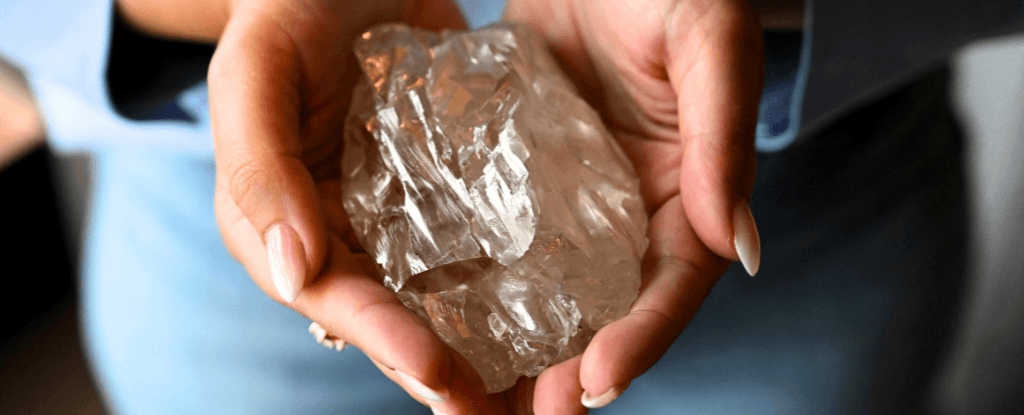
The discovery of the 2,488-carat Motswedi diamond in Botswana has shaken up the gem world. Weighing nearly half a kilo, the stone is being examined by HB Antwerp, the Belgian dealer tasked with evaluating what can be polished from it. For now, no official price has been given, though estimates suggest the collection of four large diamonds from the same mine could collectively exceed $100 million.
The find has already sparked interest from global collectors and institutions. As Margaux Donckier of HB Antwerp told AFP, “The size of these stones is so exceptionally rare that they could end up in a museum—or in the hands of a sheikh who wants them in his private collection.”
Botswana’s Karowe mine, owned by Lucara Diamond, is no stranger to headlines. In 2019, it yielded the 1,758-carat Sewelo diamond. And of course, the record still belongs to the legendary Cullinan diamond, mined in South Africa in 1905, weighing an incredible 3,106 carats, with cuts like the Star of Africa now part of Britain’s crown jewels.
The Natural Diamond Dilemma
On paper, the Motswedi is breathtaking. But in practice, the global diamond conversation has changed. While mega-stones dazzle collectors, everyday consumers are shifting their gaze toward lab-grown diamonds—valued not for size alone, but for ethics, sustainability, and affordability.
Natural diamonds this size are geological accidents, unrepeatable and unscalable. But lab-grown diamonds are delivering flawless carats on demand, democratizing sparkle without the ecological and social baggage of mining. That’s why the lab-grown diamond market size is projected to hit $74.45B by 2032—because luxury today isn’t about geological lottery wins, it’s about values and access.
A Tale of Two Futures
The Motswedi may well find its way into a museum as a historical artifact, much like the Cullinan. But for the average consumer walking into a jewelry store, the future is clear: they’ll see more lab-grown engagement rings, lab-grown diamond tennis bracelets, and lab-grown statement pieces than ever before.
The irony? While a handful of billionaires chase “the largest rough stone in history,” millions of Gen Z and millennial buyers are choosing lab-grown diamonds that look identical, shine just as bright, and cost a fraction of the price.
